Somewhere in the plains of southwestern China lies an arbitrary state border that supposedly marks out Tibetan territory. Far on the other side of the Tibetan plateau, the ‘Chinese’ side, lies one of the largest Tibetan monastery complexes. Labrang monastery is actually expanding, and already hosts around 5000 monks and scholars.
This was one of the most fascinating stops of my entire four months of travelling the Silk Road. A big call, I know! No other place I’ve ever visited has had such a riotous clash of ideas and contradictions. There’s competition between old traditions and modern necessities, political correctness and lack of cultural understanding, tourism bolstering the economy while simultaneously eroding and improving local lifestyles; and threaded through it all is the monastery at the centre of town, without which the town would not exist.
They say a picture says a thousands, and that’s the way I feel about this photo. On the surface, there is a cute toddler, playing hide a seek around the temple. She had a very cute smile, and giggled as she tottered around ‘hiding’ from her Dad, who was taking photos. Her parents laughed and smiled at their beautiful girl.
Meanwhile, behind the doors of that very hall, hundreds of monks had just been called to meditate moments earlier, and her parents had seen the procession of monks file inside. The girls giggles no doubt interrupted their daily session somewhat – but the girl’s game was not interrupted, and her Han parents spared no thoughts for how this might be inconsiderate.
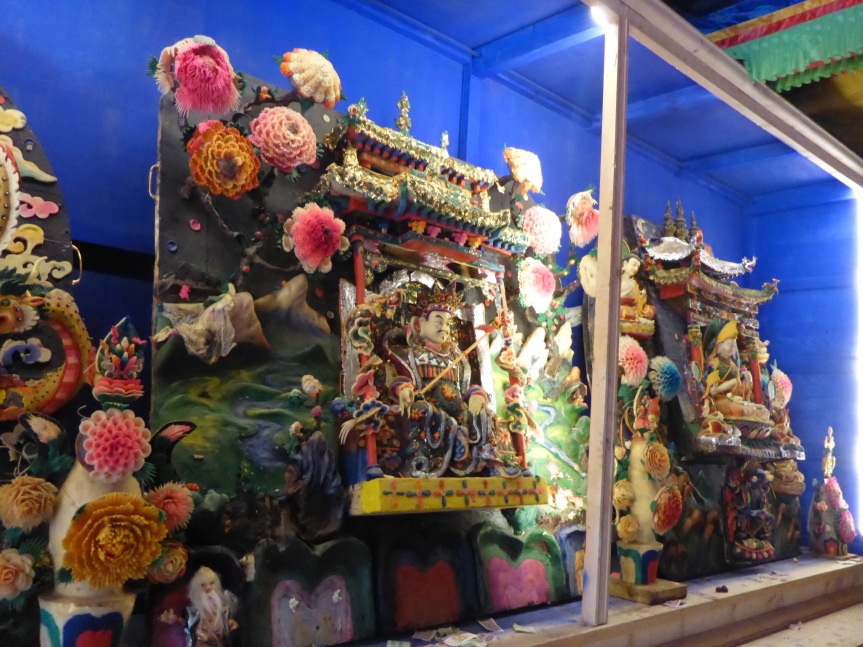
Above: Some of the yak butter sculptures on display. There’s a competition and exhibition of these, and the room they’re displayed is certainly has a strong smell!
Later we were told that many Han Chinese have never ever been in a temple, and that’s one reason so many visit Xiahe. I wasn’t sure if the monk meant a Tibetan temple, or just any temple in general (which seemed less likely), but it did make me think about the impact of the Cultural revolution, and how hard that must’ve been for monasteries such as Labrang to survive. It’s strange, for a country so shaped by Buddhism throughout it’s history, that so many of the day’s visitors could be so oblivious to some of the courtesies of temple life. Taking photos when they should not, more or less ignoring any passing monk that was not their guide for the day, and letting their kids play noisily in front of a hall full of meditating monks, it is easy to see that for some Han Chinese, there has never been much cultural awareness about Tibetan Buddhism. It probably explains so much about their relations between the Chinese government and the state of Tibet too!
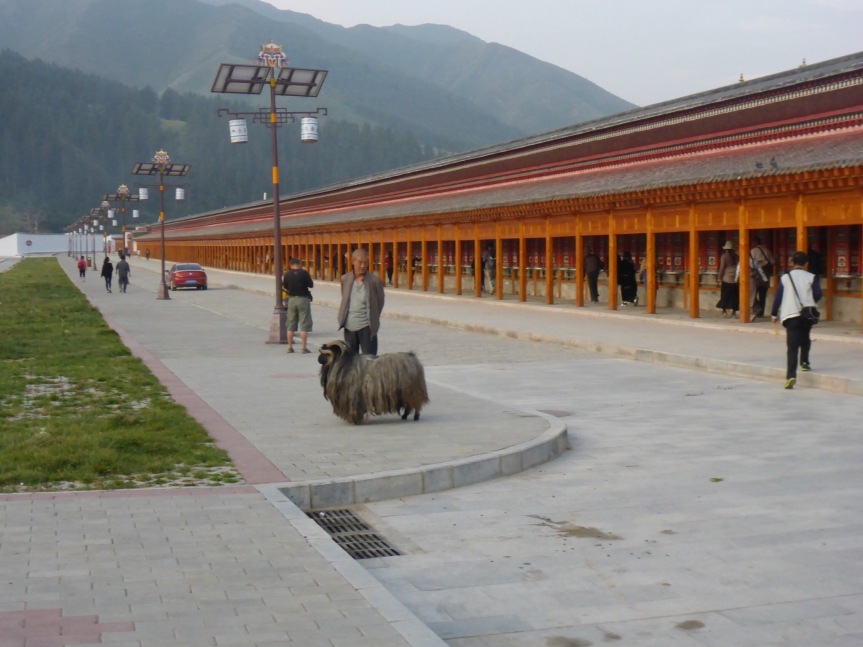
This is Xiahe’s token ram! This guy hangs outside the monastery, and sleeps out the front of one the shops on the main street. He was there every day we were in town.
One of the most entertaining parts of our short tour around the grounds was the sassy guide we were given. He was the only monk who spoke English, and was proud of having learnt it – but hated that it meant he was now the designated tour guide, and it sounded like he was not likely to get away from that role. You see, all the monks need to do something to contribute to the temple. ‘Temple work,’ if you will. Novices study, and generally do menial tasks. The higher monks get as they study more and elevate through the ranks of the monastery, they are assigned different tasks. The most respected task is often being a Lama, or a teacher. This poor monk was obviously frustrated that no other monk had learnt English, so despite his pride in having taught himself the language, was possibly not about to be promoted. No one else could take us ignorant toursists around, and he was unlikely to get away from frustrating questions such as “What do you mean the future Buddha? How can you have a past, present and future Buddha?” right after he had explained said concept. The physical deflation of this monk, and the ‘how-many-more-times-do-I-have-to-do-this’ look clearly written over his face after a French man in our White Devil group asked this question, said it all. The same Frenchman later caused further offence by suggesting that maths and physics were of greater importance than the traditional Tibetan monastery subjects such as astronomy and traditional healing. The rest of us were biting our tongues so as to not occur this monk’s wrath after that.
On the one hand Mr Sassy was a great insight into daily life of the temple. We heard his enthusiasm for the monastic life, and he really did light up when he got to speaking about certain things, and he obviously loved sharing his ideas and thoughts about Buddhism. If a few of us weren’t so afraid to offend him as our French neighbour had not learnt to, I could’ve sat for hours talking about the importance of philosophy and education and belief and health and sharing and openness…instead, I just smiled at the way he obviously loved sharing his beliefs about being good and living well.
On the other hand, it was clear that there was a lot of resentment towards tourists from the monks. It sounded like there were just a few too many visitors who did not really appreciate their traditions, or leave them be, or didn’t have enough understanding about their culture, lifestyle and religion to fully respect them. Unfortunately though, us tourists bring in a lot of money for the temple, allowing it to support the thousands of monks who come there to study and live. It’s also necessary for the economy of the local town, which definitely survives due the number of visitors who visit. A necessary evil if you will.
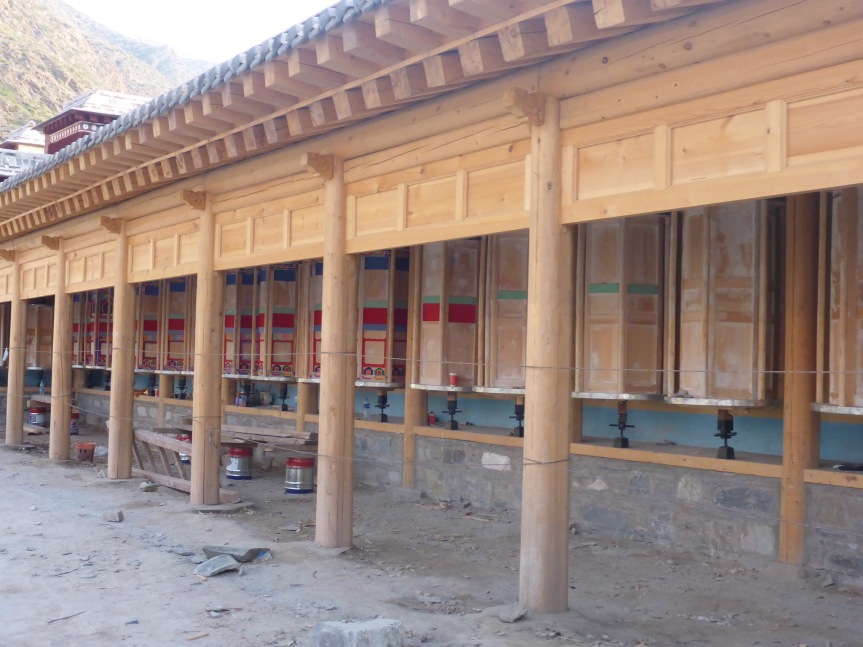
The Kora is a pilgrimage that people make, touching the hundred of prayer wheels that line the outside of Labrang. Because the monastery is constantly explanding, more of these wheels are being added. Already a few kms long, the sunrise devotion trail is about to get longer!
Labrang is a monastery that is still under construction. Several sites around the place had work vehicles and a few trades men. I was quite impressed at the scale of the complex, and how much new work was taking place. This not only reflects on the investment that tourism brings in, but the devotion of Tibetan locals who donate to the temples, and most interestingly, the huge donation the Chinese government has made to the monastery. The government pledge about 2 million (I wasn’t sure if that was USD or CNY, but either way it’s a substantial sum – one is just a lot more substantial haha) to go towards the construction at Labrang. Given the constant media narrative we are given of ‘Tibet vs Government,’ I found it extremely interesting they would donate to this temple belonging to an ethnic minority. I wondered if it signalled a change in their approach to some of their minorities, or if it was to placate the locals on another issue, or if it was also in part due to the boost it would give the domestic tourism market given that they own most of the train and airline companies. These are all the kinds of questions Xiahe throws up, without giving too many answers.

Above: A TIbetan girl looks out at the grasslands, about an hour’s drive outside of Xiahe
We were lucky enough to go out on a Tibetan grasslands tour, a definite highlight of the trip. We took the truck out the back roads of the Tibetan plateau, off roading until we reached a local family who had arranged to meet us. This drive reminded us all of Kyrgyzstan, open plains with herds of sheep and goats, and we were interrupted by some yaks crossing the roads (though in Kyrgyz it would have been horses). It was as if we had never been in any big cities like Kashgar, Turpan or driven days along the uber-modern highways.
Although not yurts, Tibetans traditional live in semi-permanent tents, which they can move as they need to. They predominantly herd yaks, sheep or goats. Yaks give Tibetans meat, butter, milk, and their local yak tea. It is increasingly harder for them to move to the best pasture available, according to the seasons. Out there, the most obvious forms of modernisation were the fences, and they’ve had a substantial impact on locals, severely restricting their nomadic lifestyle. Some Tibetans think it’s a way for the Chinese government to restrict their movement, or reduce the amount of land the ethnic minority has access to. In a country with an expanding population, and new housing being built in nearly every major city we passed through, it’s certainly going to be difficult to keep such grazing areas untouched in the decades to come. I guess that’s the drawback for this community – they’re on the wrong side of the Tibetan border.
And then there was my favourite, ironic picture: the nomadic family, looking out over the yaks, chatting as they do every day in the sun, being shaded by a RedBull tent. I wondered if the grandma and grandpa had ever even tasted RedBull, yet here was this piece of marketing in the most unlikely of places!
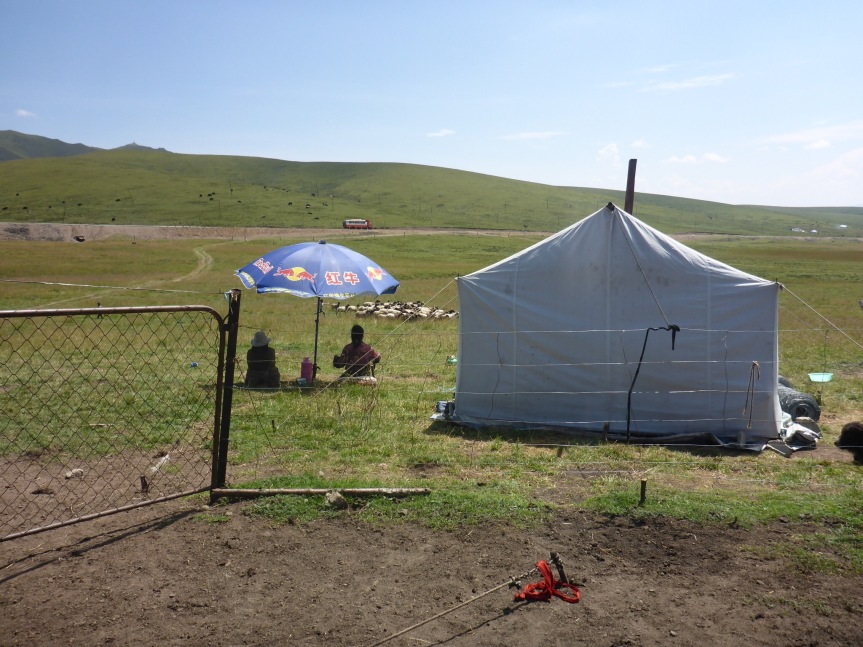
There is a confluence of the modern and traditions here. While talking about the life of the nomads today, it came up that there was no education system for Tibetans. Traditionally, to be educated, you would study at the monastery. There is of course no imperative to stay at the monastery forever, and so it is a viable free education system. But, as the Frenchman had earlier pointed out, the education subjects traditionally taught in the monastery are not always those that are valued by modern society. Thus, there’s a conflict. If Tibetans ever did want to establish themselves in the broader Chinese business culture, it becomes quite difficult. They have to more or less give up their nomadic ways, teach themselves Mandarin, and accept some of the Han Chinese’s influence. Or, the children are sometimes sent into town, to stay with a relatives or friends while they go to school – which in turn means they are less likely to return to their lands and nomadic lifestyles because they grow up away from that. Of course, the nomadic lifestyle is very hard, as they must survive off their yaks and herds, and trade what they can for vegetables and other goods. So, realistically, they are living in poverty – and the only way for them to get out of that cycle is to give up their traditions and get an education.
And therein lies the problem, and the crux of the arguments from both the Tibetans and the Chinese government: to keep their traditions they need lands to roam free and to accept their own forms of lifestyle and education, but to be a part of the multi ethnic and pro-development China they need to leave some of those freedoms behind. Of course, many don’t want to be a part of China at all. But in towns like Xiahe, who didn’t quite make the cut-off for the Tibetan territory, that is not a likely option. But with the boom in domestic tourism, hopefully it will foster more cultural awareness on both sides, and allow them to develop and live along side each other a little easier.
Xiahe is a town in Gansu Provence of mainland China. Let me know your opinion of Labrang, Tibet and China by commenting below! I visited there earlier in the year while travelling with Dragoman as part of their Bishkek-XiAn trip.

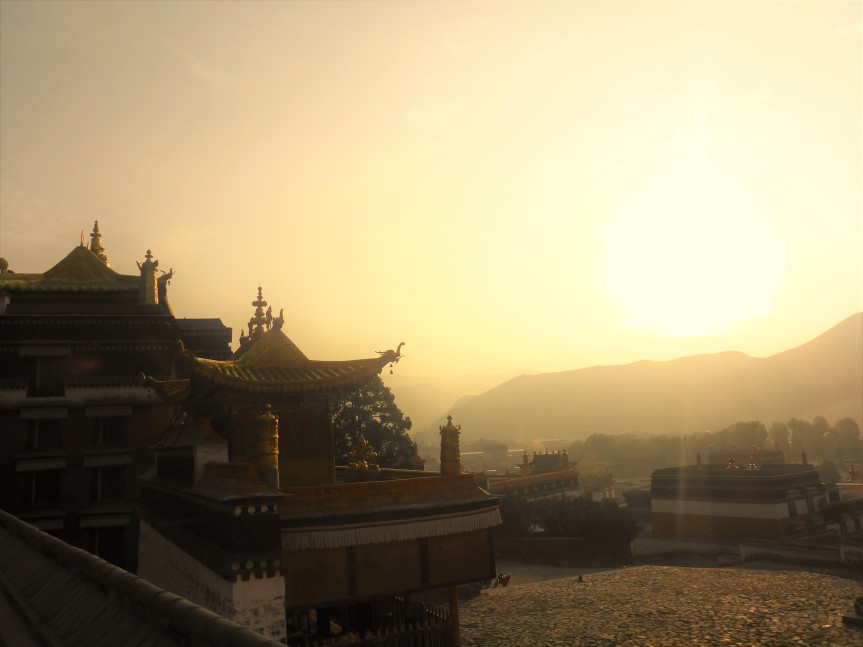
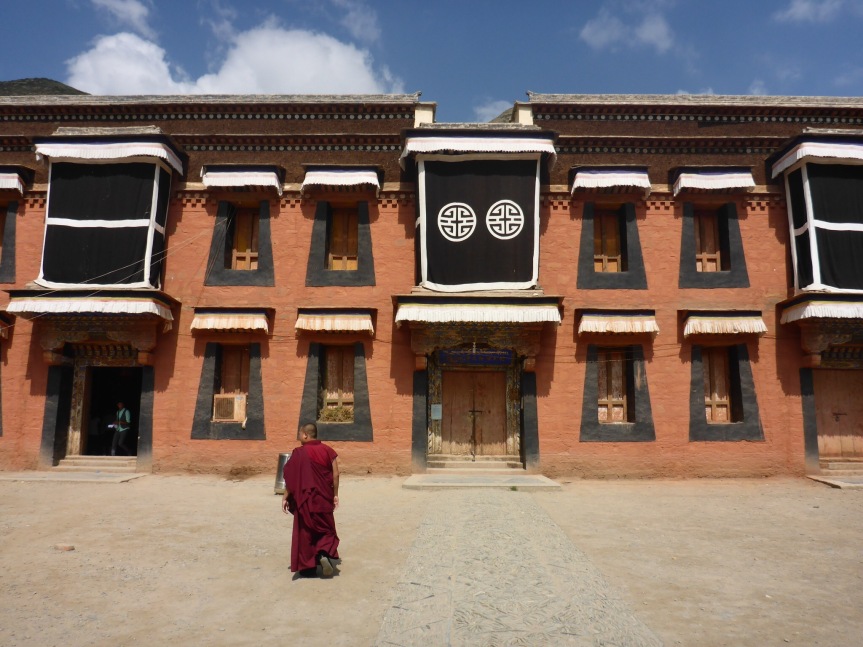
I recognise your feelings. We had very similar thoughts about Tibet and tourism. I’m glad I’ve been but I would never go back. Thanks for visiting The Glasgow Gallivanter.
LikeLiked by 1 person
I think I’d find it interesting to visit the Tibetan territory itself, just to compare – but not sure if I want to contribute to the problem either. Difficult one!
LikeLiked by 1 person